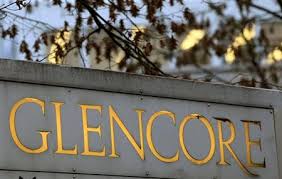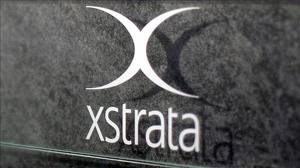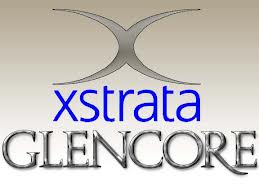Ivan Glasenberg, chief executive officer of Glencore International/ Getty
Will you offer us a hand? Every gift, regardless of size, fuels our future.
Your critical contribution enables us to maintain our independence from shareholders or wealthy owners, allowing us to keep up reporting without bias. It means we can continue to make Jewish Business News available to everyone.
You can support us for as little as $1 via PayPal at office@jewishbusinessnews.com.
Thank you.
–
/ By Clive Minchom /
Glencore Merged with Xstrata May 3rd, 2013
When Glencore completed the merger with its previously 35% held coal mining affiliate Xstrata on May 3rd, 2013 it probably did so with a good deal of relief. After all it had been a long and arduous process that took many months of negotiation by Glencore’s CEO Ivan Glasenberg. First with Xstrata itself; then with some large and intransigent Xstrata shareholders holding out for more money; then with regulatory authorities in several countries including the most important one, Xstrata’s biggest customer, China. The merger permits a full fungible melding of cash flows of both entities against its combined liabilities, and by conducting it on a share exchange basis enlarged the equity base of the combined entity as well at a single stroke.
The New Company’s Financial Results for the Six Months to June 30th, 2013
Once they closed the deal however then a new chapter essentially began and their first half results to June 30th are the first financial results announced for the newly merged entity. These were announced by the company today August 20th, and the new Glencore reported revenues of US$ 112 billion for the six months period to June 30th, 2013. This includes Xstrata results only from the date of acquisition (Glencore also prepares separate pro forma statements which combine the entities as if from the start of the year but these can be confusing), which is certainly a fair chunk of change and the new company recorded US$156 billion of total assets in the consolidated balance sheet as at the end of June, 2013.
Glencore reported a consolidated net loss for the six months of US$8.9 billion, however, after writing down assets for impairment by a total of US $8.5 billion, reflecting the new realities of the mining industry worldwide. US$7.6 billion of the impairment amounts came from a complete write off off the goodwill recorded on acquiring Xstrata’s mining assets. For the whole acquisition about US$12 billion of goodwill had initially been recorded, with the difference remaining charged to Xstrata’s commodity trading assets. Another US$1.5 billion of other assets write downs were also taken for the period, otherwise the company as a whole would have showed a small net profit of a little over US$1 billion, before a foreign exchange translation loss itself of about $1 billion (which takes their “comprehensive” net loss to US$10 billion – this is an additional line item in the financial statements). Cash flow from operations was recorded as US$2.9 billion.
–
–
Glencore Has a Stronger Balance Sheet Than Before
Net debt increased to US$34.8 billion at June 30th 2013 compared to US$15.4 billion at December 31st, 2012, reflecting the consolidation of Xstrata’s debt, but still leaving the company with committed available credit and cash resources of US$13.6 billion – and the company has refinanced an important segment of its borrowings recently at favorable interest rates too since the merger.
More importantly the company came out of the deal with a book equity base of US$54 billion at the end of June. While the merger added some debt it more than doubled the equity base as it was done by way of share exchange rather than for cash, and this was the ultimate purpose of its financial engineering – a brilliant result and a certain escape from a perhaps much more troubled future if the merger had not proceeded when it did. The combined entity can also access all its wholly owned cash flows much more easily swell.
Hence Glencore continues to hold a Baa2 (stable) credit rating from Moody’s and a BBB (stable) rating from Standard & Poors.
–
–
Accounting Rules To Play By
Unlike US reporting entities, which report according to accounting principles under US GAAP (US Generally Accepted Accounting Principles), Glencore is a London publicly listed entity which reports under IFRS reporting rules that prevail within the European Union (International Financial Reporting Standards). The biggest difference between them is that under IFRS most balance sheet segment items, for example, are accounted for at fair market values at the end of each reporting period, rather than at historical cost as under US GAAP.
This is of course a huge conceptual difference in accounting policy and key to interpreting the accounts of all European listed companies when compared to US based entities. There is also at the moment something of a standards war going on between the accounting rule setting bodies in Europe and in the United States, complete with nationalistic overtones, though that is a subject for another day.
However what the IFRS rule does mean is that, at times, many items in a company’s balance sheet including fixed assets and the value of forward contracts (if these are part of the business you are in) are necessarily re-valued completely subjectively at the reporting period end. It then becomes the job of the external auditing process to minimize as much as possible any resulting potential for systemic variability, as opposed to operating variability – or putting it in plain English to prevent people from cheating.
It was after all precisely such mark to market accounting, as it is termed, of assets and forward contracts that led to the spectacular downfall of Enron itself a few years back in the United States, when implementation of certain special rules permitted this in the US even then with respect to Enron’s massive forward energy contracts. And the auditing safeguard failed completely in that case, leading ultimately to the corporate demise of Arthur Andersen, the Enron auditor.
On balance however this is now a different world and I am personally inclined to trust Ivan Glasenberg much more than the leaders of Enron, though it always remains something to keep in the back of one’s mind. Even the US$7.6 billion write down of Xstrata assets they are taking now, is it enough, is it too much, how can one possibly tell?
When they did the merger they put in US$12 billion of goodwill on the merged balance sheet for the whole of Xstrata (essentially the difference between the market value of the stock issued in payment less the then book values of the assets acquired), allocating US$7.6 billion to Xstrata’s hard mining assets and the rest to its commodities business. Now they have written off entirely the mining portion of the goodwill.
–
–
The Market Remains Favorable to the Deal
Even Glencore in the notes to its latest accounts say it is hard to determine and may take up to a year to establish the proper ongoing amount – an open ended indication of possible subsequent reinterpretations perhaps.
The ultimate test though remains perhaps the stock market, which seems to remain reasonably comfortable, and still values the company at about US$60 billion, which by a curious coincidence is also close to its reported equity book value as well. This is down about 10-15% from the value in the market in the early days immediately after the merger, when the stock initially got something of a temporary turbo-boost in expectation of great things perhaps, before gradually declining since in the face of poor commodity expectations.
At least Glencore now has a fresh start, and has taken its medicine like a number of the other mining companies facing lower commodity prices, such as Barrick Gold. But with a relatively strong balance sheet Glencore is in a much better position compared to some of its competitors. As the commodity and mining industry continues to go through what may be a prolonged rough patch it is imperative they keep this approach.








